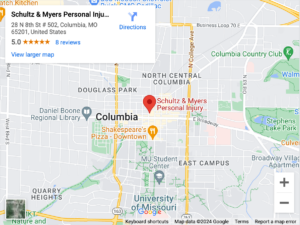Loss of a body part is permanent and can have catastrophic consequences. Unless your amputation only involved a fingertip or other minor injury, your dismemberment will likely cause lifelong disfigurement and permanent disabilities.
Amputations happen more frequently than you might expect. Studies estimate about 1.6 million Americans were living with a missing limb as of 2005. The most common amputation occurred in the lower limbs. In fact, doctors perform roughly 159,000 amputations of the toes, feet, or legs in the U.S. every year.
What Is the Anatomy of Your Extremities?

Although they do not contain organs, your extremities have complex anatomies.
Bones give your limbs structure by way of the skeleton, which provides a rigid framework for the soft tissues, blood vessels, and nerves. Your bones also give your muscles leverage to move your body as they contract and relax.
The soft tissues of the musculoskeletal system cooperate with the skeleton. Ligaments hold your skeleton together by stabilizing your joints. They also guide the movement of your joints so they do not bend in the wrong direction.
Muscles attach to bones through tendons. Together, the muscles and tendons move your body by pulling on bones, giving your body strength and motion.
The brain controls the muscles through nerves. Control signals travel from the brain to the muscles to cause them to contract or relax. Sensory signals travel from the nerve endings in the skin to the brain to give it information about pressure, temperature, and texture.
Together, these signals tell the brain about your surroundings and control the muscles in response. For example, if the nerve endings in your fingers detect a hot surface, your brain controls your muscles to pull your hand away before it gets burned.
Bones, muscles, tendons, and ligaments are living tissues. They require oxygen to produce the energy they need to move your body. They also use oxygen to produce proteins so they can repair structures.
What Are the Two Types of Amputation Injuries?
Amputations take two forms:
Traumatic Amputations
A traumatic amputation happens when your accident severs a body part. For example, you could get your finger caught in a saw in a construction accident, and the saw could sever your finger from your hand.
Under some circumstances, doctors can reattach a traumatically amputated body part. But their ability to do so will depend on:
- How long the body part has lacked blood flow
- The level of chemical or biological contamination at the amputation site
- Whether the amputation happened cleanly or resulted in crushed and mangled tissues
Generally, if you suffer a clean amputation and reach the hospital quickly, you have a higher chance of successful reattachment.
Surgical Amputations
Surgical amputations happen when the tissues of your body part suffer too much damage to survive. At that point, doctors will amputate the body part to prevent the dying limb from developing gangrene and killing you.
These amputations can happen for many reasons, including:
Vascular Damage
An accident can crush or sever your blood vessels. If your doctor cannot restore blood circulation to the body part, it will die from a lack of oxygen.
While doctors can sometimes reattach or graft damaged blood vessels, their ability to do so depends on how badly they were damaged and how many need repair.
Mangled Soft Tissues
Muscles, tendons, and ligaments can get so severely damaged that there is nothing left in your body part except bone. When these soft tissues get damaged, you also lose the blood vessels and nerves that run through them. Rather than leaving you with an immobile bone, doctors will often amputate it.
Shattered Bone
Broken bones can heal. But when a bone shatters, doctors must reconstruct it before it can heal. If there are pieces missing or if they’re too small to reconstruct, your doctor may recommend amputation.
What Can Cause an Amputation?
Amputations can result from disease or trauma. In the U.S., diseases like vascular disease, diabetes, and cancer account for about 68% of amputations. The remaining 32% result from trauma.
Some forms of trauma that can result in an amputation include:
Car Accidents
Car accidents can crush your legs, feet, and toes. The risks of these injuries are particularly high in head-on collisions. In these crashes, the force of impact can push the engine into the firewall. As the firewall collapses, your legs can get crushed and trapped under the dashboard.
Your lower limbs may also suffer a traumatic amputation in the crash, or they may suffer so much damage that doctors need to amputate them once you reach the hospital.
Workplace Accidents
Workplaces have many dangers that can lead to amputation injuries, including:
- Falling objects that can crush you
- Sharp objects that can lacerate you
- Machinery that can catch and mangle you
Workplace accidents are one of the leading causes of upper limb amputations. As you might expect, these injuries happen when a worker’s fingers, hands, or arms get crushed or severed.
Dog Bites
Dog attacks can crush bones and tear soft tissues. Doctors might recommend amputation if you suffer severe vascular damage from the crushed and torn blood vessels from a dog bite.
What Types of Compensation Can I Pursue for an Amputation Injury Caused By Someone Else?
After an amputation, you will have significant medical expenses. You will also miss substantial time from work. As a result, you could lose several months’ worth of income. You may even need to change jobs or quit working due to the loss of your body part.
Equally importantly, you will suffer a long and painful recovery. You may experience mental anguish as you face a future without your limb, and you will suffer permanent disabilities due to your lost body part.
Thankfully, you can pursue injury compensation if your accident resulted from someone else’s negligence. Your compensation can cover both your economic and non-economic losses, contact Schultz & Myers Personal Injury Lawyers for a free consultation. Call us today at (314) 444-4444.





